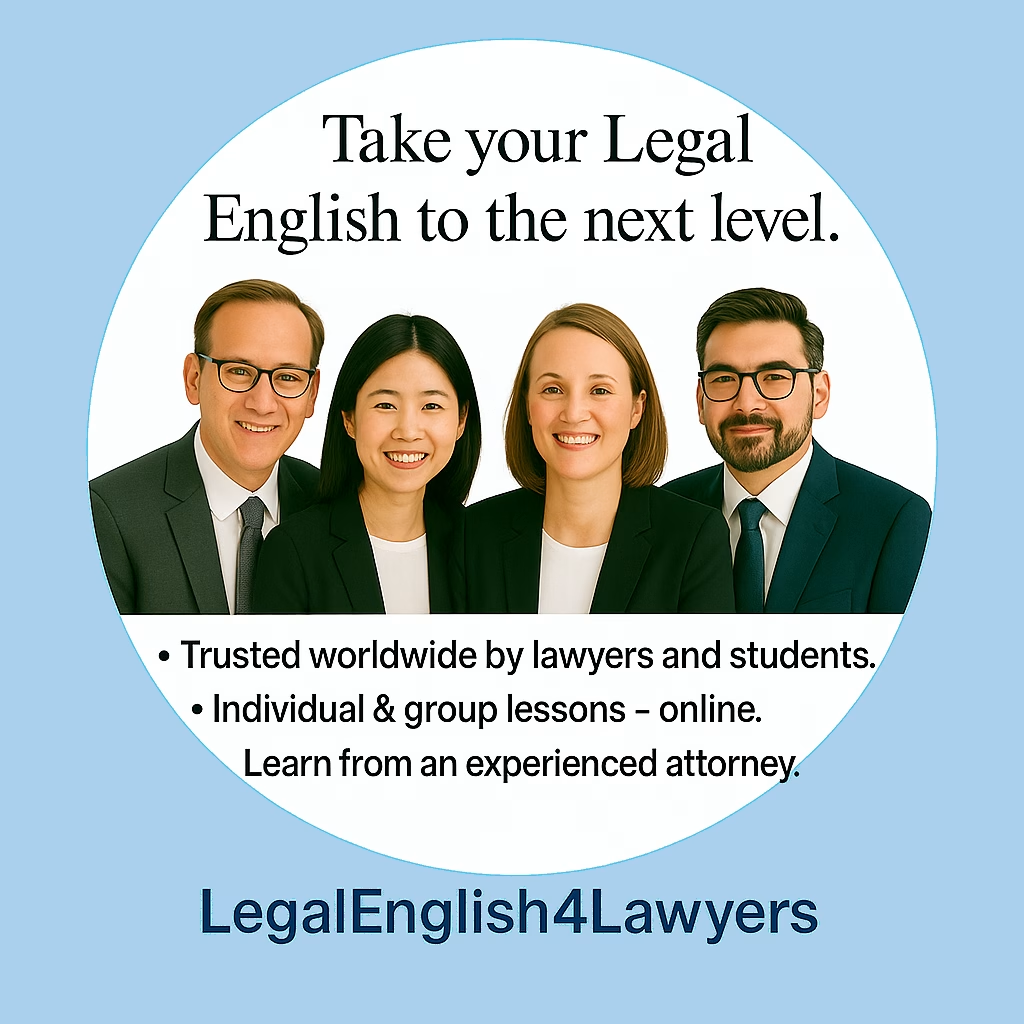
Ready to Go Deeper?
At LegalEnglish4Lawyers.com, we don’t just define legal terms — we explore them through real documents, client scenarios, and clause-by-clause analysis.
Click here to see a quick view of all posts.
-
Reduce Stress After Work With the Powerful Technique of One-Pointedness (Ekāgratā)
Reduce stress, restore calm, and gain clarity after a busy day with one-pointedness (ekāgratā) as described in Patanjali’s Yoga Sutras.
1. Key Takeaway
Practicing ekāgratā — one-pointed focus on a single object like breath, music, or a hobby — helps calm the mind, reduce stress, and restore clarity. Just a few minutes a day can make a big difference and foster increased focus and productivity.
2. Introduction
Modern life demands sharp thinking — but it often breeds scattered attention. Our minds are constantly pulled in many directions: phone calls, emails, deadlines, and never-ending to-do lists. Even after work hours, the mental chatter doesn’t stop.
This is where Patanjali’s Yoga Sutras offer a timeless, practical tool: ekāgratā — one-pointedness. Sometimes described as a “legal code for the mind,” the Yoga Sutras are 196 short, precise statements (aphorisms) written over 2,000 years ago that identify the problem of distraction and offer practical methods for cultivating focus, calm, and balance.
The Sanskrit word ekāgratā comes from eka (one) + agra (point, tip, focus) + the suffix -tā (state of being). It literally means “the state of having a single point.” Patanjali uses it to describe a mind that rests on one object instead of bouncing among many. In this way, ekāgratā can serve as a natural antidote to stress.
Stress lingers when the mind replays conversations, anticipates problems, or spins in endless loops. Practicing ekāgratā outside of work helps us decompress by giving attention to a single anchor — such as breath, music, or a hobby done with full focus.
3. What the Yoga Sutras Say About One-Pointedness
Patanjali presents one-pointedness at different stages of the Yoga Sutras*.
- In Book I, Sutra 32, he teaches that disturbances of the mind can be calmed through eka-tattvābhyāsa — the practice of concentrating on a single principle. This is the practical method: steadiness begins by choosing one focus, whether it is the breath, a symbol, or a simple idea.
- In Book I, Sutra 39, Patanjali emphasizes flexibility, noting that steadiness can also be cultivated by meditating on any chosen object. The specific object doesn’t matter as much as the discipline of returning the mind, again and again, to a single anchor.
- Later, in Book III, Sutra 11, Patanjali uses the word ekāgratā directly. He explains that when both distraction (sarvārthatā, the scattering of attention toward many objects) and deliberate one-pointedness (ekāgratā) are subdued, the mind enters samādhi — complete absorption. Here, ekāgratā is presented as a powerful stage of practice, but ultimately one to be transcended for the deepest stillness.
4. What Neuroscience Says About One-Pointedness
Modern science now confirms what Patanjali described: the brain relaxes when it focuses on one object at a time. Multitasking keeps stress circuits active, but one-pointed focus allows the nervous system to reset.
- Harvard Health Publishing explains how mind–body practices like meditation and yoga trigger the body’s relaxation response, lowering stress hormones and calming the nervous system: https://www.health.harvard.edu/mind-and-mood/how-to-reduce-stress-and-anxiety-through-movement-and-mindfulness
- A 2025 study in Clinical Psychological Science, summarized by the Harvard Gazette, found that meditation reshapes brain activity and builds resilience against stress: https://news.harvard.edu/gazette/story/2025/07/meditation-provides-calming-solace-except-when-it-doesnt
- Research in Imaging Neuroscience shows that focused-attention meditation reorganizes brain networks tied to attention and self-control: https://direct.mit.edu/imag/article/doi/10.1162/IMAG.a.14/130698/Neurophysiological-mechanisms-of-focused-attention
- An EEG study reported by PsyPost showed that six weeks of mindfulness training changed brainwave patterns, reducing rumination and sharpening focus: https://www.psypost.org/new-study-links-mindfulness-meditation-to-changes-in-brainwaves-tied-to-attention
- Even ten minutes of meditation can improve attention and executive function, according to a recent experiment: https://arxiv.org/abs/2209.12625
In simple terms: focusing on one object doesn’t just feel calming — it literally rewires the brain to handle stress more effectively.
5. Simple Ekāgratā Practices for Everyday Life
- Breath Focus – Sit quietly for 5 minutes and follow your breath. If thoughts intrude, gently return focus.
- Mindful Walking – Walk without your phone, noticing each step or the sounds around you.
- Music Listening – Pick one calming piece and listen with full presence — no multitasking.
- Focused Hobbies – Everyday activities like reading, painting, cooking, playing music, or gardening can all become one-pointed practices when done with full attention and without distractions.
- Evening Reset Ritual – Light a candle, repeat one phrase, or write a single reflection to anchor the mind before bed.
The key is simple: choose one anchor and return to it gently and consistently.
6. Benefits
- Mental Decompression: Creates a clear boundary between work and personal life.
- Better Rest: A calmer mind sleeps more easily and wakes more refreshed.
- Sharper Clarity: A steady mind notices details and makes better decisions.
- Emotional Balance: Builds resilience in high-pressure or stressful environments.
7. Conclusion
Patanjali’s teaching on ekāgratā is timeless: when the mind fragments, stress multiplies; when it becomes steady and one-pointed, clarity and calm follow. One-pointedness doesn’t require hours of meditation — just a few minutes of focused attention on breath, sound, or a simple calming activity can clear the fog of stress.
By practicing this regularly, you give your mind the space it needs to recover and recharge, so you can meet life’s demands with greater balance, calm, and clarity.
8. Footnotes
Book I – Samādhi-pādaḥ
Yoga Sutra I.32
तत्प्रतिषेधार्थमेकतत्त्वाभ्यासः
tat-pratiṣedhārtham eka-tattvābhyāsaḥ
“Concentration on one principle (eka-tattva) is the practice that calms disturbances.”
Patanjali introduces the method: steadying the mind by choosing one focus.
Yoga Sutra I.39
यथाभिमतध्यानाद्वा
yathābhimata-dhyānād vā
“Or steadiness may be achieved by meditation on any object one chooses.”
Patanjali emphasizes flexibility: one-pointedness can be cultivated through any chosen anchor.
Book III – Vibhūti-pādaḥ
Yoga Sutra III.11
सर्वार्थता एकाग्रतायोः क्षये ततः चित्तस्य समाधिः
sarvārthatā ekāgratāyoḥ kṣaye tataḥ cittasya samādhiḥ
“When both the scattering of the mind (sarvārthatā) and its one-pointedness (ekāgratā) are subdued, the mind enters samādhi (complete absorption).”
Patanjali explicitly names ekāgratā as a stage of one-pointed concentration — a powerful tool, but ultimately one to transcend on the path to samādhi.
9. Disclaimer
This article is for educational purposes only and does not provide medical, psychological, or legal advice. Consult professionals for personalized guidance on health or wellness needs.
- In Book I, Sutra 32, he teaches that disturbances of the mind can be calmed through eka-tattvābhyāsa — the practice of concentrating on a single principle. This is the practical method: steadiness begins by choosing one focus, whether it is the breath, a symbol, or a simple idea.
-
Mastering Legal English: 8 Strategies for Non-Native English-Speaking Lawyers and Law Students
Introduction.
For lawyers and law students who speak English as a second language, developing fluency in Legal English is essential for success in today’s global legal environment. Whether you’re advising clients, negotiating agreements, preparing legal documents, or appearing in court, the ability to express yourself clearly, professionally, and persuasively in English can significantly affect your effectiveness and confidence.
In this article, we present eight practical strategies to master Legal English that will help you improve your Legal English skills and perform at a higher level in both academic and professional legal contexts.
How to Practice Legal English Effectively
Before discussing specific strategies, let’s take a quick look at some general study tips to make your practice more efficient.
Legal English fluency doesn’t come from long, unfocused study sessions. Instead, consistent and deliberate practice is the key to lasting progress. The following habits will help you get the most from your efforts:
- Keep study sessions short and focused – Aim for 20 to 30 minutes per session to stay engaged and retain more.
- Engage actively with the language – Speak out loud, summarize what you read, or rewrite real legal texts in your own words.
- Be consistent – Practicing a few days a week over time is more effective than occasional long sessions.
- Rotate skills – Alternate between listening, speaking, reading, and writing to build well-rounded fluency.
Tracking your practice with a simple log or checklist can also help you stay accountable and notice improvements over time. Now, let’s move on to some specific strategies for gaining fluency in Legal English.
8 Strategies to Improve Legal English Fluency
1. Get Personalized Feedback from a Legal English Coach or Tutor
What to do:
Work directly with a coach or tutor who understands both legal concepts and the language learning process. Focus on key areas that have room for improvement. Meet with your coach or tutor at least one time a week. Overtime, the commitment pays off.
Why it works:
Feedback from an experienced Legal English coach helps you identify blind spots, correct errors early, and develop confidence in real legal situations.
2. Summarize Legal Cases Aloud and Record Yourself
What to do:
Read a legal case or judgment and then summarize its key facts, legal issue, reasoning, and conclusion aloud. Record your summary and play it back to evaluate your clarity and fluency.
Why it works:
This helps you process legal information in English, improves spoken fluency, and reveals areas where you need to improve your pronunciation or structure.
3. Shadow (Listen To) Legal Audio Recordings
What to do:
Listen to legal podcasts, oral arguments, or hearings and repeat what you hear, sentence by sentence, trying to match the speaker’s tone and speed.
Why it works:
Shadowing sharpens your listening skills, pronunciation, and sentence rhythm, and helps internalize commonly used legal phrases.
4. Use Voice-Based Legal English Practice with AI
What to do:
Use an AI tool or voice-based platform to roleplay common legal scenarios. Practice client consultations, courtroom speech, or contract negotiation aloud, and ask the AI to respond or challenge you.
Why it works:
It offers low-pressure, high-frequency practice opportunities and helps you simulate legal communication in real time.
5. Practice Describing Legal Scenarios
What to do:
Imaging a legal scenario and write about it, such as drafting a sample contract clauses or court pleading. Focus on clarity, structure, and accuracy. Over time, build up to paragraphs or full documents.
Why it works:
This develops your ability to use precise language, improves grammar, and strengthens your control over legal writing conventions.
6. Review Real Legal Documents
What to do:
Read authentic legal documents such as court pleadings, contracts, and opinions. Pay close attention to sentence structure, terminology, and formatting.
Why it works:
You’ll gain insight into how legal arguments are constructed and how professional Legal English sounds in context.
7. Join a Legal English Study Group or Language Exchange
What to do:
Meet regularly with students or lawyers to discuss legal topics in English. Practice giving legal opinions, asking questions, or conducting mock interviews.
Why it works:
Real-time interaction improves fluency, builds confidence, and helps you become more comfortable using Legal English in a conversational or professional setting.
8. Keep a Legal English Vocabulary Journal
What to do:
Maintain a notebook or digital log of new legal terms, their definitions, example clauses, and your own sample sentences. Organize it by topic or legal field.
Why it works:
Writing and reviewing legal vocabulary helps reinforce long-term retention and gives you a go-to resource when speaking or writing in English.
Conclusion
Whether you’re a lawyer or law student preparing for a legal career in an English-speaking jurisdiction, or simply want to sharpen your communication skills, building Legal English fluency is a powerful investment. These eight strategies give you a roadmap to develop the confidence and accuracy required to succeed in global legal environments.
Choose one or two strategies to start with, and commit to consistent practice. Legal English fluency is based on practicing consistently.
Want Personalized Support?
Legal English tutoring is one of the most effective ways to accelerate your progress. Work with an attorney who can guide your speaking, writing, and legal reasoning in English.
Disclaimer
This article is for educational and informational purposes only and does not constitute legal advice. While our tutors are trained in Legal English and legal communication, they do not provide legal services or representation. LegalEnglish4Lawyers.com is an educational platform intended to support language learning and professional development.
-
Legal English Phrasal Verbs – Part 2: 10 More Key Expressions Every Lawyer Must Know
Introduction.
Legal professionals use phrasal verbs every day—often without even realizing it. Whether you’re drafting documents or negotiating terms, understanding these expressions can improve your fluency and confidence. Here are 10 more essential Legal English phrasal verbs to add to your toolkit.
10 More Phrasal Verbs Every Lawyer Should Know:
1. Carry out
Definition: To perform or execute a legal action, task, or order.
- The executor must carry out the terms of the will without delay.
- The parties agreed to carry out their confidentiality obligations even after termination.
- The police were ordered to carry out the search pursuant to the signed warrant.
2. Step down
Definition: To resign or withdraw from a legal role or position.
- The judge chose to step down after a motion for recusal was filed.
- As part of the settlement, the CEO agreed to step down within 30 days.
- The mediator stepped down to avoid a potential conflict of interest.
3. Hand over
Definition: To transfer possession or control, usually of documents or evidence.
- The defendant was compelled to hand over all emails relevant to the claim.
- Counsel refused to hand over privileged material without a protective order.
- The buyer requested that the seller hand over the corporate records before closing.
4. Iron out
Definition: To resolve or finalize small legal disagreements or unclear terms.
- The lawyers met to iron out the last remaining issues in the licensing agreement.
- We still need to iron out the non-compete provisions before signing.
- The parties were able to iron out the payment schedule during the conference call.
5. Call off
Definition: To cancel or terminate a planned legal event.
- The deposition was called off due to a scheduling conflict.
- They called off the mediation once the case was dismissed.
- The arbitrator called off the hearing pending review of jurisdictional issues.
6. Follow through
Definition: To complete or enforce a planned legal step.
- The client asked if the firm had followed through with the notice of appeal.
- Counsel failed to follow through on filing the witness list by the deadline.
- The agency followed through by imposing a fine under the new regulations.
7. Set forth
Definition: To formally state, explain, or lay out in writing.
- The rights and obligations are set forth in Section 8 of the agreement.
- The statute clearly sets forth the elements of the offense.
- The policy sets forth procedures for submitting a formal complaint.
8. Look over
Definition: To review briefly or casually.
- Please look over the proposed settlement agreement before the hearing.
- The associate looked over the case file to prepare for the client meeting.
- He looked over the draft motion but asked for more legal support on page three.
9. Take on
Definition: To assume responsibility, representation, or liability.
- The firm took on three new asylum cases last quarter.
- The buyer agreed to take on any outstanding tax liabilities.
- She’s not ready to take on full trial responsibility yet.
10. Opt out
Definition: To formally decline participation in a legal process or system.
- Class members have until July 15 to opt out of the settlement.
- The contract includes a clause allowing either party to opt out of arbitration.
- Under data privacy law, users can opt out of certain tracking activities.
See more phrasal verbs at our previous post: Legal English Phrasal Verbs – Part 1 (20 Essential Expressions for Lawyers).
Book a Free Legal English Trial Lesson.

Learn Legal English with a former lawyer. One-on-one lessons via Zoom or Google Meet—personalized for lawyers and law students worldwide.
Disclaimer
DISCLAIMER: The content provided herein is only for discussion purposes and may contain errors. The reader is responsible to confirm the accuracy of the information provided. The content does not constitute legal or professional advice. We disclaim any liability for any loss or damage incurred directly or indirectly from the use of this information.

